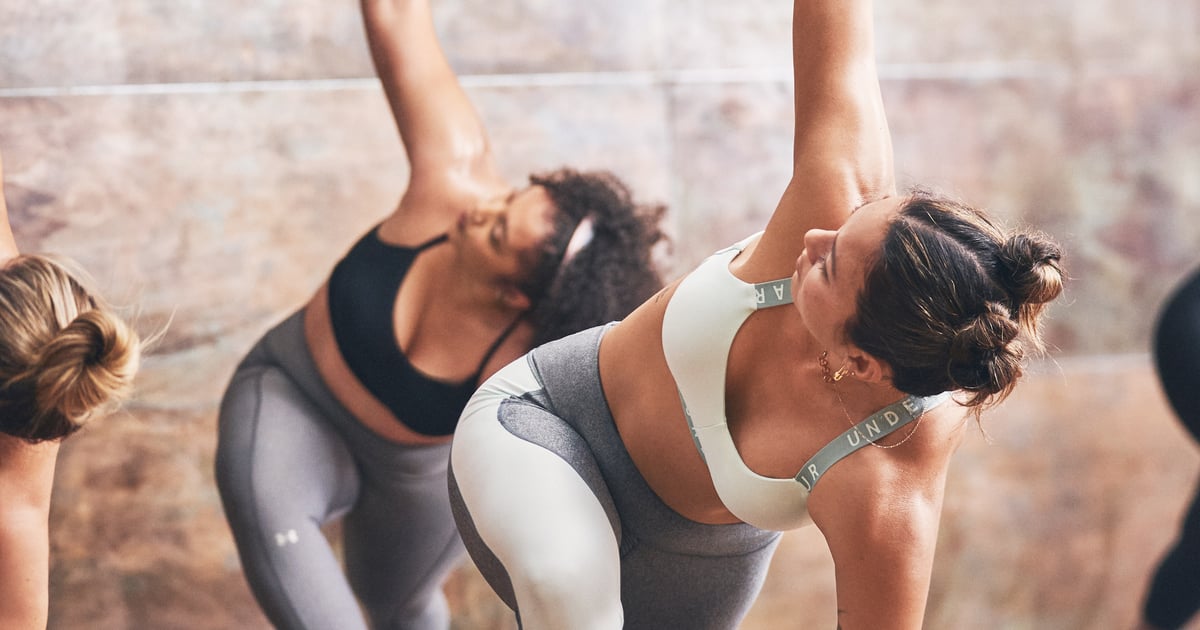
I’m no stranger to being sore. After several years of living in my running sneakers and Under Armour ColdGear® Armour Leggings ($50) with my hair in a constant ponytail for marathon training, I’ve gotten nice and close with the post-workout, next-day aches and pains. Although soreness isn’t anything new to me, I realized I didn’t know much about what was keeping me from giving it my all on day two.
“Muscle soreness is the result of micro tears that occur in your muscles during training,” explained Daniel Giordano, PT, DPT, CSCS and CMO of Bespoke Treatments. “These micro tears will set off an inflammatory response, which tells your body’s immune system to work in order to repair the damage.”
While there have been times I’ve walked away from a workout knowing I’d feel it the next day — after my first-ever boot camp class, for example. There were other times when soreness snuck up on me and had me feeling unexpectedly achy. After a bit of a running hiatus, I assumed a three-mile run would be no problem and would come back to me with ease. I was not prepared to feel drained and sore after a simple three-mile run this fall — I was a seasoned runner, after all. But feeling sore and tight from this simple 5K left me feeling discouraged and down. However, according to Giordano, both of these scenarios can lend themselves to soreness: starting a new activity or jumping back into an old one.
Overtraining or overloading the muscles during your workout are some of the biggest culprits of muscle soreness. “Soreness usually comes from going too hard too soon, having too much of a load during your workout, or from a new movement that your brain does not recognize,” he explained.
Even experienced, active people like me can experience soreness from workouts they know and love. It’s absolutely normal to feel soreness when you are getting back into things. “That is why it is important to work with a performance medicine specialist, such as a physical therapist or exercise physiologist, when beginning your training,” he added. Just as we must be patient with performance results when jumping into a workout routine, we must be patient with our muscles’ recovery process, too.
Normal soreness is experienced 24-48 hours post workout, with some cases lasting 72 hours post. Of course, there are more serious exceptions where soreness is prolonged and is painful to the touch. This could be a sign of a more serious issue called rhabdomyolysis where a large amount of a protein called myoglobin is released into your bloodstream, which can lead to kidney damage, noted Giordano. Although it is rare, it’s important to look out for if soreness is nonstop and painful.
Ultimately, being sore should not prevent you from doing workouts or your daily activities. And if you’re still sore one to two days after your big workout, newsflash: you may have just overdone it. “That may be a sign that you went too hard and you need more rest,” Giordano said.
And recovery is key. “You shouldn’t ever really work out through soreness,” Giordano noted. “Your body needs to repair those muscles that were worked in order to come back stronger. It is important to move when you are sore in order to improve blood flow and circulation, but do not stress the sore area with resistance training.” If you are determined to be active in some way, modify around the area that is sore, said Giordano.
Luckily, there are a few things we can all focus on to help minimize soreness and get through our recovery phases faster.
1. Sleep
“Your body needs good quality deep sleep in order to release hormones and repair your muscles,” Giordano said. Aim for seven to nine hours of sleep per evening.
2. Hydrate
Giordano noted that because you lose electrolytes when you work out, it’s important to replace them in order to keep yourself properly hydrated.
3. Eat Well
“Replenish your carbs for energy and consume high-quality protein in order to help repair the muscle fibers that were broken down during the exercise, which may help decrease soreness and recovery time,” he added.
You can also use a percussive therapy device (such as a Theragun).
This helps to improve blood flow, improve circulation, downregulate your nervous system, and allow your body to get into a recovery state, according to Giordano.
5. Move
Lastly, never underestimate simply moving. Walking, mobility work, and even low-intensity movements can improve blood flow and circulation, Giordano explained.
